
Oral surgery in canine and feline patients often requires extended periods of anesthesia necessitating optimal anesthetic management.

Oral surgery in canine and feline patients often requires extended periods of anesthesia necessitating optimal anesthetic management.

What is meant by small mammals? Small mammals in this document refer to those species commonly kept as pets, not including dogs and cats, for example, rodents (rats, mice, chinchillas, guinea pigs), rabbits, and ferrets.
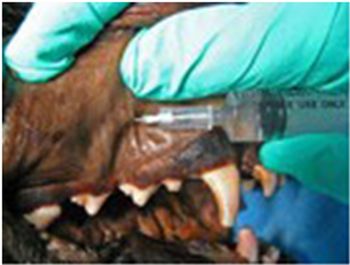
The utilization of regional nerve blocks for oral surgery in dogs and cats is synonymous with quality patient care.

Nonsteroidal anti-inflammatory drugs (NSAIDs) are the most widely used analgesic agents in equine medicine.

The information obtained by sequencing the canine and feline genomes will certainly have a major impact on the study of genetic diseases in dogs and cats.

Part II discusses some of the common agents used for managing pain associated with oral surgery in dogs and cats.

Inflammation is a reaction of the microcirculation characterized by movement of fluid and leukocytes from the blood into extravascular spaces.
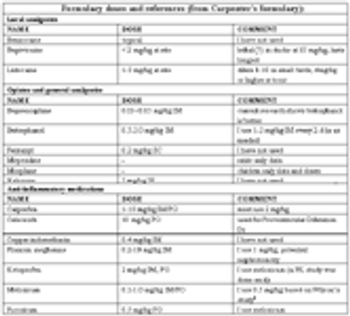
When one speaks of pain management in dogs they are discussing one species with research to back up their statements.

Cancer pain management was not taught in veterinary schools until the 1990's.
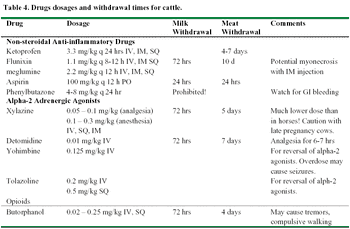
Pain management in food and fiber producing ruminants is often more problematic than in other domestic species.
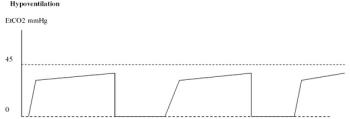
A good anesthetist must have an understanding of normal physiology -- as this it is altered by general anesthesia.
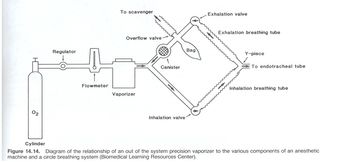
Understanding the operation and maintenance of the anesthesia deliver system (ADS) is essential for operator and patient safety.

The ferrets are mammals in the Mustelid family.

Allen Lakein said "planning is bringing the future into the present so that you can do something about it now".

Pain control is what acupuncture does best. It is also the easiest problem to treat with acupuncture.

Clinicians working with "exotic species" should establish consistent anesthetic and analgesic protocols to manage cases that require diagnostic or surgical procedures.
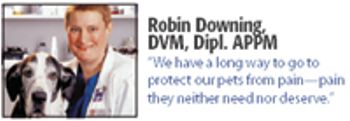
Pets don't have to deal with pain-but they do.

While this review will focus on postoperative pain management, it is important that we acknowledge the critical perioperative elements that lay the foundation for ideal patient pain management. Pain control needs to be in place before the surgeon's blade contacts skin in order to minimize central and peripheral sensitization. Without adequate pre-emptive analgesia, the nociceptive process ramps up unabated by general anesthesia. Receptor sensitivity increases and structural rewiring can occur.

Click here for the American Association of Feline Practitioners' Web site. The guidelines are at the top of the page.

Help cat owners provide a pain-free existence for their feline friends.
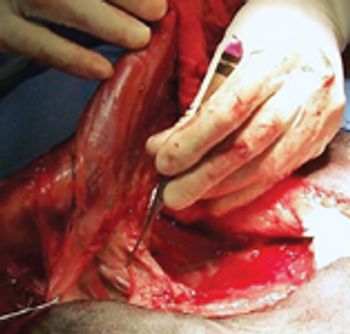
Amputation is a painful procedure, so aggressive, multimodal analgesia is necessary. The patient should receive a premedication that includes a pure mu agonist opioid such as morphine, fentanyl, oxymorphone or hydromorphone.
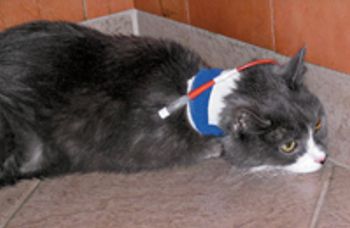
Nutritional needs often play a secondary role to medical and surgical intervention. Critically ill veterinary patients are at high risk for malnutrition because of physical impediments, as well as physiologic and metabolic abnormalities. Protein and/or calorie malnutrition results in decreased immune competence, decreased tissue synthesis, increased protein degradation (especially that of the lymphatic system), altered drug metabolism and is known to increase morbidity and mortality in human patients. Although veterinary studies are lacking, it is generally accepted that early enteral nutrition decreases complications from malnutrition.

10 key points for a well-balanced veterinary pain management program.

Should our pregnant associate use a respirator during surgeries to avoid inhaling anesthetic gases?

Australian study finds veterinarians are failing to take safety precautions.